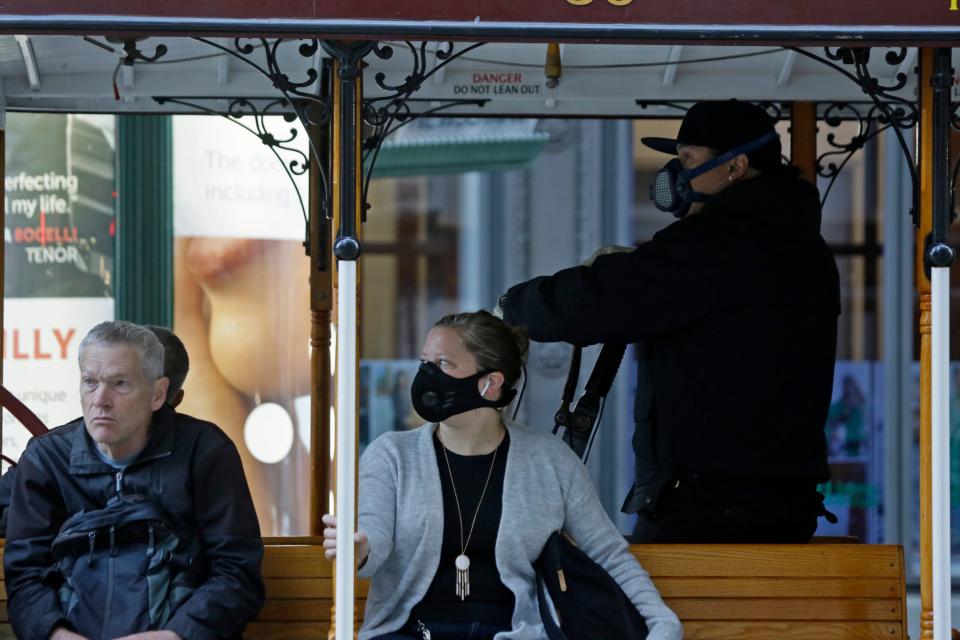As wildfires foul California air, residents don face masks. But they really need respirator masks
Respirator masks, yes. Surgical and dust masks, no.
Wildfires fueled by drought conditions and high winds are blazing through swaths of real estate around San Francisco and Los Angeles, fouling air quality for residents miles from the flames.
Wildfire-driven air quality issues are nothing new to California, and the state Department of Public Health provides advice on which masks will help — and which ones won't.
For residents concerned about air quality, the health department advisory stressed that respirators were the way to go.
"One-strap nuisance dust masks or surgical masks with straps that go around your ears will not protect you from smoke or ash because they are not designed to seal tightly to the face," the department warned in an advisory published two years ago.
That was at a time when a series of hundreds of wildfires burned across the state, including the notorious Tubbs Fire in Sonoma County near San Francisco that killed more than 20 people and destroyed thousands of homes.

On Tuesday, the Kincade Fire in Sonoma County had destroyed more than 115 square miles of vegetation and more than 120 homes and businesses and was only 15% contained. And people in the metro San Francisco area, more than 50 miles away, could smell the smoke.
And in Los Angeles, the Getty Fire has burned more than 600 acres, damaged or destroyed more than a dozen homes, and was only 5% contained.
Diablo winds: Fierce winds are fanning the wildfires. What are they?
What kind of mask protects against wildfire smoke?
Respirator masks called “N95” or “P100” were suggested by the department, which said they were easily available in hardware or home improvement stores and even pharmacies. A pack of disposable masks cost about $20.
"If you must be outside for extended periods of time in smoky air or in an ash-covered area, you may benefit from using a tight-fitting respirator to reduce your exposure," the advisory said. "If you are experiencing adverse effects from breathing in a smoky environment, even indoors, you may benefit from using a tight-fitting respirator."
Getty Fire: Fire rages around famous California Getty museum, but priceless art is staying put
But the department also cites risks, saying a respirator can make it harder to breathe and suggesting that anyone with heart or lung problems consult their doctor before using one.
Wearing a respirator if you are physically active can increase the risk of heat-related illness, so anyone working with one should take regular breaks. And respirators do not come in sizes "suitable for children," the advisory says, and since they would not fit well enough to provide a tight face seal, they would not be effective at reducing exposure.
"The most effective way to protect yourself during wildfire emergencies is to stay indoors or limit your time outdoors when there is smoke in the air," the advisory says. "By limiting your exposure in this way, you may not need to wear a respirator."
This article originally appeared on USA TODAY: Getty Fire air quality: Which face masks to wear for smoke protection

